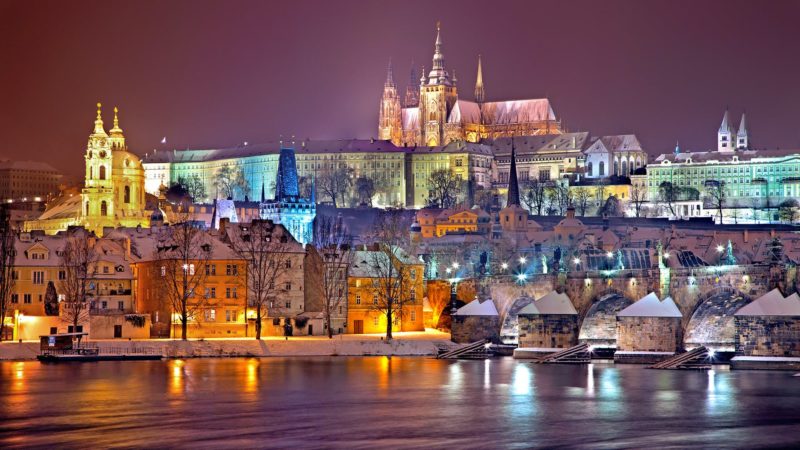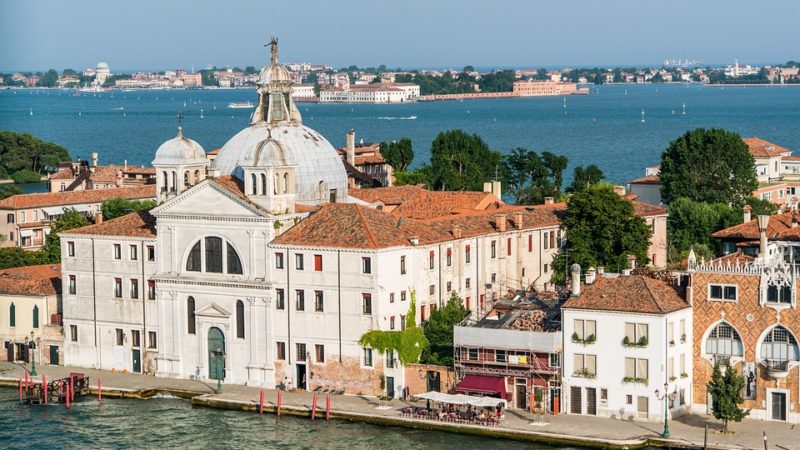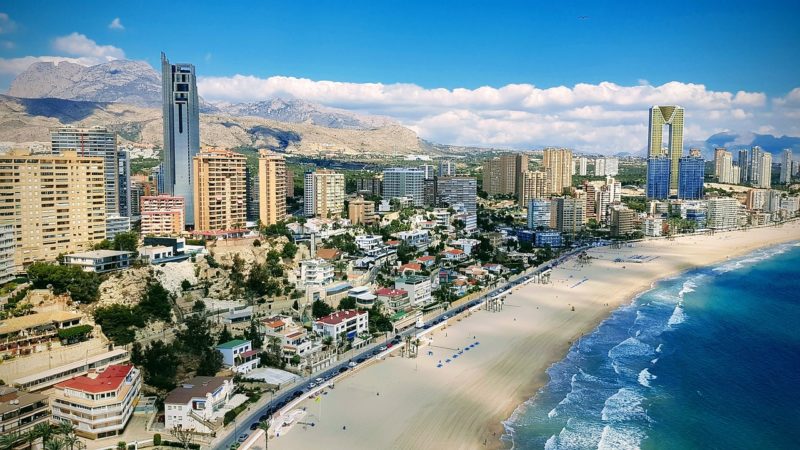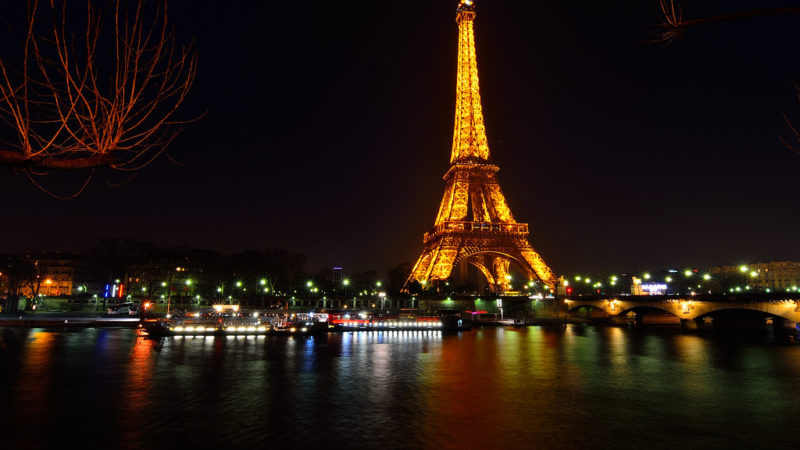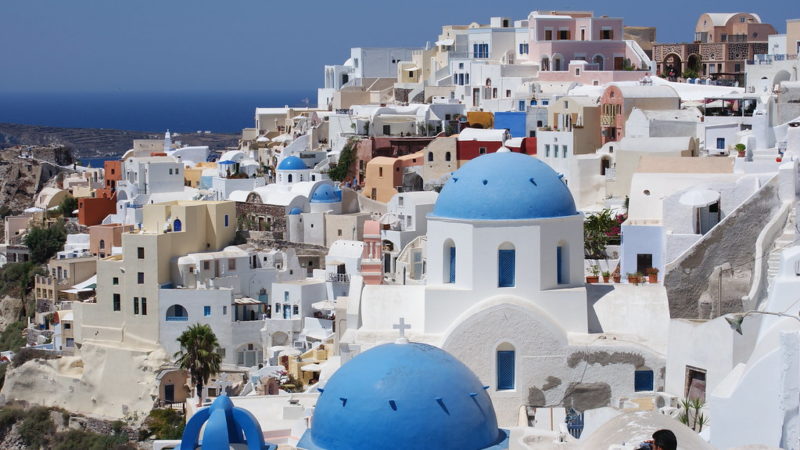Things to Do in Rome

If you are traveling to Italy, then one of your things to do in Rome will be sightseeing in the city. It is not a difficult thing to do as long as you follow some rules. Rome is the largest city and the capital of Italy and the largest political center of all the Italian cities. Also, it’s one amongst the best places in Europe to travel.
For thousands of years, Rome has been a major historical settlement for over three thousand years. With over 2,812,000 inhabitants in 1,279 km², it is easily the largest city in Italy.
There are countless historical sights to see and things to do in Rome as it is not only the center of Italian politics but also the heart of Italian culture.
You will never run out of things to do in Rome, so do some research on the various tourist sites and places of interest, and you will have a full itinerary of things to do in Rome.
THINGS TO DO IN ROME
There are many places of interest in Rome as it is the center of Italian society, and there are many historical sites of importance as well. Rome is the home of many museums that have fascinating exhibits.
The Trevi Fountain
The Trevi Fountain is a great place for a picnic, and you can enjoy a nice day walking around the city or strolling through the historic sites.
Rome is also famous for its art, as it has numerous churches and public places that are worth seeing. There is a pool of art galleries in the city, which provide a great place to relax and view it.
Theatres in Rome
A couple of things to do in Rome include going to one of the several theaters that are located in the city. There are a number of theaters that are located in different parts of the city.
Some are smaller in size, while some are large and have multiple stages and chairs for those that are interested in watching live performances.
Sistine Chapel
You can take the opportunity to visit the Sistine Chapel, which is a Catholic church that houses the largest frescoes in the world.
There are also historical sights and monuments which come under the top things to do in Rome, such as:
- The Colosseum
- The Domus Aurea
These are two of the oldest buildings in Rome and are worth exploring in order to get a feel for Roman history and culture.
BEST THINGS TO DO IN ROME
Colosseum
The Colosseum is one amongst the most popular sites in Rome. The Romans first used the Colosseum as their main meeting point, but over time it has also become a popular place to watch live matches from all over the world.
People love to visit this amazing site and seeing all the different football matches on offer. In addition to the football matches, there are also other shows to watch and many other events taking place in the Colosseum.
However, if you intend to witness a completely unique experience a bit of history, you may want to book tickets in advance as the Colosseum has limited availability.
History
When you visit Rome, you should definitely pay a visit to the Colosseum, Rome’s biggest and the second largest in all of Italy. The Colosseum was first used by the Roman Empire to house the Senate, and the other important meetings took place here.
The building in ownself is an impressive structure & many people consider it to be one of the Seven Wonders of the World. As with many other ancient buildings, the Colosseum was destroyed in the 7th century during the Muslim invasion.
Since then, it’s been rebuilt & is now one of the most visited tourist attractions in all of Italy. The Colosseum itself contains two rows of seats, which are located directly in front of the facade.
As a result of the design of the structure, the seats allow visitors to view the facade of the building from all angles and view the different entrances from any position in the building.
Other Nearby Museums
Due to its popularity, you are sure to find other historical buildings in Rome to visit as well. One of the most popular places that you will find is:
- The Museo Storico di San Gimignano
This museum got housed in an enormous building that once housed the original San Gimignano church. Today, the museum is home to one of the oldest preserved churches in the entire city.
- Basilica di San Salvatore
It is an imposing structure that is steeped in history. There are also a number of other religious buildings in the city to see.
St Peter’s Square
St Peters Square, Rome, is a popular place to visit for a couple of reasons. St Peter’s Square in Rome is located right in front of St Peter’s Basilica within the Vatican City or Holy See, the papal fortress in Rome, which is the capital city of the Catholic Church.
Both the plaza and the basilica have been named after St Peter, an apostle considered by the Catholic Church to be the founder of their religion.
He was an early convert to Christianity, and he played a major role in establishing the early church and later became the first Pope of Rome. St Peter was also the first Bishop of Rome.
History
What is interesting about St Peters Square, Rome, is that it has a unique architecture. This design was created by the Renaissance period of Rome, and this is not actually what we think of when we think of Rome at all.
The architecture of the streets is what most people see on TV in Rome, but this design was very much in use during the Middle Ages in Rome. The square was originally called San Vitale, which means ‘Market Place’ in Italian.
It was not till about the 16th century that this place would become the famous square we know today. As you can see from the architectural designs of this area, it was quite different from what we do imagine when we hear the words “Rome.”
You will be able to notice that many of the buildings are more like a market place than anything else.
Significance
It was during the Middle Ages that St Peters Square, Rome, was named.
There was a time when the area was under Muslim control, and they had to name it after the place where Christians were martyred.
This is something that gives it a special significance to Christians in Rome, as they will always remember this place fondly as it was the place where they gathered to pray and worship God.
The Pantheon
The Pantheon, or Temple of Peace, is a large temple, built by Emperor Hadrian around 125 AD in what’s being known as the Vatican City, on the site where an ancient temple had previously stood.
The original temple had been a church dedicated to the Christian deity of Jesus Christ, and the new one got built to accommodate the growing numbers of followers of Christianity who came to Rome as missionaries.
Its construction involved many men, and they were divided into two groups. Some of them, headed by Christians, built the main part of the temple, the area surrounding the altar, the baptistery, and the sanctuary. Others, including Roman Christians, built the rest of the building.
History
The new temple was the largest temple built in Rome at that time, and it was dedicated to the Roman God Jupiter.
As the population of Christians grew, the new temple was expanded, and by180 AD, it was covered with marble and was made into an impressive edifice.
Today, the Temple is visited by thousands of people each day. During the Middle Ages, it was destroyed and burned down by the Muslim invaders of Spain, and then the Christians who ruled in Spain were forced to move to Italy in return.
Later, the rebuilding of the temple became a popular tourist attraction in its place of worship, and many tourists do come every coming year to see what can be seen of the original building.
Significance
The Pantheon in Rome is considered sacred by many Christians. The Pope often visits it, and it has become a very popular tourist destination. Many tourists also visit the Vatican City, which is located in nearby Vatican City.
The original temple was destroyed during World War II, but the Christians who rebuilt it did not try to conceal the fact that it was a religious building.
Instead, the building is still open for visitors every day, and there is a large statue of Christ on the Temple Mount, just off the main roads leading to the main Vatican Museums.
It is one amongst the most beautiful places to see in Rome.
The Trevi Fountain
The Trevi Fountain, or Treviso Fountain as it is commonly referred to, is a fountain located on the banks of River Tiber, Rome (Italy).
Designed by Italian architect Nicola Salvio and completed by his team, it stands at the height of over 27 meters and is made up of fifty-six pillars that form a continuous circular basin.
Standing at this height, it’s the third-largest Baroque water fountain in all of Europe and one of the largest fountains on earth.
History
The Trevi Fountain was designed in 1855 by Nicola Salvio. The work was begun shortly after the death of Nicola Salvio and continued after his death to honor the life & legacy of his great friend Giacomo Ezio di Lavoro.
The design was done to honor the memory of a young boy who had been drowned in Tiber River when he fell from a bridge.
The fountain depicts a beautiful young woman with flowers surrounding her in a lovely and soothing waterfall that flows from a fountain that sits at its base.
In addition to honoring the young boy, the fountain also features a small statue representing him.
Significance
The Trevi Fountain has been a favorite tourist attraction in Rome for many years. It has received many awards and was chosen by UNESCO as one of the world’s Seven Wonders of the World.
Over the past fifty years, the Trevi Fountain has become an attraction not only in Rome but in Italy and across Europe.
Today, it is often seen during important festivals such as the Christmas holidays, Valentine’s Day and, Easter. Many people come to Rome just to see the Trevi Fountain.
So the next time you plan a trip to Rome, don’t forget to take your camera with you and snap your own pictures of this beautiful fountain, its surroundings, and the amazing view from its summit.
Spanish Steps
The Spanish Steps, Rome is an architectural masterpiece in the Italian capital.
The Spanish Steps are an impressive set of stairs in Rome, Italy; they can be accessed from either Piazza Monti or the Tiber River by means of a large stone staircase.
The Spanish Steps consist of two long and five short steps, the most famous being the longest of which is situated at the base of the Tiber River.
History
The Spanish stairs were built to commemorate the 400th anniversary of the unification of Spain and Portugal.
This day is celebrated in several of countries in Europe, especially in Spain, where the Spanish Steps were built as part of the festivities.
Although the Spanish Steps were erected during this celebration, the actual construction took place much later & is believed to get begun sometime in the 1400s.
Although the original purpose for the stairs was not for religious purposes, they still retain their significance today.
Significance
In addition to its historical importance, the Spanish Steps serve as an attraction for many visitors from across the world each year.
Some of the more famous people who take advantage of the Spanish Steps include former President of Spain, Jose Maria Aznar, as well as several members of the royal family.
For those interested in the many beautiful sites found on the Spanish Steps, there are guided tours available. Other tourists who enjoy walking the Spanish Steps and other parts of Rome are able to enjoy the sights without having to hire a guide.
In addition, it is possible to do this as a self-guided tour, allowing you to discover the sights and sounds on your own. Whether you are walking to a particular location or just walking around the city, there is an activity for everyone.
Roman Forum
The Roman Forum, otherwise called by its Greek name, Forum Romantium, is an irregularly shaped rectangular public square surrounded by several ancient governmental buildings in the center of the ancient metropolis of Rome.
Citizens of this ancient city called it the Capitoline, or just the Capitol, previously known as the Market.
Romans were accustomed to calling it ‘the Market’ because it was the place where citizens and visitors would go to buy what they needed for daily living and as part of their daily ritual of commerce.
The first traces of Roman architecture in the area date back to the 7th century B.C., and there is evidence that the first buildings to be erected were used as meeting halls for the Senate.
History
It was in second-half of the first century B.C. that the Roman state moved from the city of Rome to the province of Asia Minor, and the Roman Forum was relocated to the newly created city of Nicomedia.
This was where the famous Forum was constructed, with the intention of having it resemble that of a marketplace and was to have shops and public places on three sides.
As the city grew in size and sophistication, the size and layout of the Forum continued to change, and it became more than a public market, but a place for political debates.
The Forum was expanded in the third century B.C., with new structures being built for various functions, including the House of Trajan, the Senate House, the Temple of Jupiter Capitolinus, the Roman Theatre and the Pantheon, a gigantic building of marble which stands on the western side of the Forum.
These developments, along with other architectural works, made it what we know today.
Significance
For many centuries, the Roman Forum was a central location for all major events in the city, from sporting events to legal proceedings.
As a result, it was one amongst the largest shopping centres in the world, as well as one amongst the largest cities in Europe.
The Roman Forum was not only home to the ancient Senate and the Senate building, but also the home of many famous figures of early Rome, including Julius Caesar and the famous poet Seneca, whose house is located there today.
Piazza Navona, Rome, is an open area in Rome, which serves as a public park. It is built on the place of the Coliseum, which was built during the first century AD, in memory of Julius Caesar.
It follows the shape of the open area of the amphitheatre and is designed with a colonnade at the entrance. The ancient Romans often went there just to watch the agonies, which were caused by the gladiators.
The agonies which were caused by the gladiators were the main reason for the construction of the Coliseum. The place of Piazza Navona, Rome, is also a place of pilgrimage to a certain Jesus of Nazareth.
Jesus, who is said to turn as the Son of God, was crucified in the place of this place.
History
The history of Piazza Navona, Rome, is also related to other places. During the reign of Trajan, it was built as a Roman forum. Later on, it served as the capital city of the Roman empire.
Later, when it was the place of the Forum of Trajan, it became a center for the political parties.
This place was the center of discussion and a meeting place for various political parties. In the later years of its existence, it served as the city’s financial center as well.
Significance
Today, Piazza Navona, Rome is also a famous tourist spot. In fact, it is very popular among both tourists and locals.
Many visitors, especially those who come here to visit Italy tour, come to visit this place, because of its famous location, which is situated close to major attractions of Rome.
Sistine Chapel
The Sistine Chapel, also called the Pantheon, is a major church in the Vatican, the official seat of the Pope, in Vatican City.
The chapel was created by Pope Sixtus III, who restored it around 1482 and named it after himself. In addition to this important church, it also serves as a tourist attraction for those coming to the city.
The chapel is located on the western side of the Pantheon, which means that it faces the river Seine.
There are two main entrances into the building, and one of them leads to St. Peter’s Square. This is the location where all official Catholic mass takes place on a daily basis.
History
Because the Sistine Chapel, Rome, is considering a religious institution, it is open to the public during many hours of the day. In fact, many of tourists who come to visit the city are often unaware that they are entering a major Vatican Museum.
There are several museums inside the Sistine Chapel that visitors can view. The Vatican Museums, or Museo Civico, is one of these museums.
The Museum does cover a broad range of art forms from ancient times through the present, including mosaics, sculptures, and paintings.
Inside of this museum, visitors can also find a number of valuable artifacts, such as the original stone floor of the Pantheon, as well as an ornate fresco painted on the wall of the Sistine Chapel.
Significance
The Sistine Chapel was actually built using the plans of Michelangelo, a famous Italian sculptor. In fact, Michelangelo is often credited with having designed the building of the Pantheon.
There are some buildings located in the area that is believed to have been constructed by Michelangelo, but most of these structures are actually part of the Vatican Museum.
The Church of the Holy Sepulcher is one of these buildings and is located near the corner of Piazza Navona.
The Church of San Damiano stands in the middle of Piazza Navona, while the Lateran Palace is located near the center of the church.
Each of these buildings is constructed around a large bell that is located at the center of the church. These bells date back as far as the tenth century and continue to serve as the church’s main bell.
St. Peter’s Basilica
The Holy Sepulcherals of St. Peter are two enormous buildings located within the walls of St. Petersburg Basilica, Rome. These two structures are named St. Peter’s Cathedral and St. Peter’s Basilica.
They were built in honor of the first Catholic pope and are located in front of the Holy Sepulcherals, where the first church was erected on the ruins of the Roman city.
Both the churches are famous for their architectural style, and they have become a major tourist attraction in Rome.
History
There are many reasons why people visit St. Peters Basilica, Rome. People visit this church in order to see the remains of the first pope who died during the time of Emperor Nero.
The remains of his body have been relocated to this church by his successor. Also, it is believed that the remains of St. Peter are buried in this church because of the crucifix, which is placed on top of the facade.
There are many other reasons why people visit St. Peter’s Basilica, Rome. It is the spot where Pope Emeritus Benedict XVI gave his resignation.
Most tourists from other parts of the world come to the church to witness the famous papal conclave, which is held every six months.
Significance
When it comes to architecture, St. Peters Basilica, Rome has the most impressive building compared to other churches in the Vatican.
The two huge buildings are made up of different kinds of materials, which are wood and marble. The exterior wall assoicated with the church is made of marble, while the interior is made of wood.
The church also has the famous “Nave di San Gennaro,” which is a replica of St. Peter’s Basilica.
The “Nave di San Gennaro” is a big church where there is usually a large crowd because it is used for mass each week.
Other than being a great tourist attraction, St. Peters is also a holy place to visit and one of the best places to visit in Rome.
Final Words
To travel to Rome is a great opportunity to see some of the greatest museums in the world. Not only that, but you can do experience some incredible food while you are there.
The best way to travel to Rome is to go with a group of people. While it is not impossible to travel by yourself, a group allows you to experience the city in a whole new light.
This also does provide you with the opportunity to socialize and get acquainted with others who might get interested in heading to the trip.
There is also a pool of great hotels in Rome to choose from, including many that are within walking-distance from all of the major attractions.

